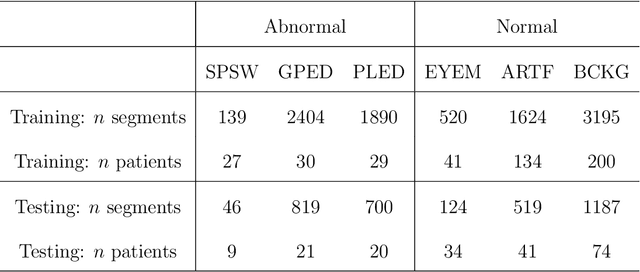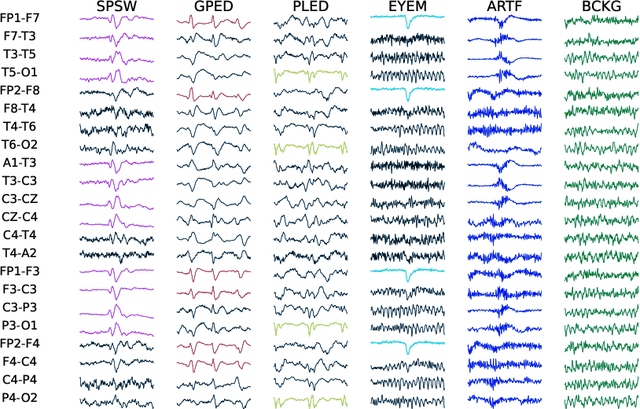Haipeng Shen
Nested Deep Learning Model Towards A Foundation Model for Brain Signal Data
Oct 09, 2024



Abstract:Epilepsy affects over 50 million people globally, with EEG/MEG-based spike detection playing a crucial role in diagnosis and treatment. Manual spike identification is time-consuming and requires specialized training, limiting the number of professionals available to analyze EEG/MEG data. To address this, various algorithmic approaches have been developed. However, current methods face challenges in handling varying channel configurations and in identifying the specific channels where spikes originate. This paper introduces a novel Nested Deep Learning (NDL) framework designed to overcome these limitations. NDL applies a weighted combination of signals across all channels, ensuring adaptability to different channel setups, and allows clinicians to identify key channels more accurately. Through theoretical analysis and empirical validation on real EEG/MEG datasets, NDL demonstrates superior accuracy in spike detection and channel localization compared to traditional methods. The results show that NDL improves prediction accuracy, supports cross-modality data integration, and can be fine-tuned for various neurophysiological applications.
Nested Deep Learning Model: A Foundation Model for Brain Signal Data
Oct 04, 2024



Abstract:Epilepsy affects over 50 million people globally, with EEG/MEG-based spike detection playing a crucial role in diagnosis and treatment. Manual spike identification is time-consuming and requires specialized training, limiting the number of professionals available to analyze EEG/MEG data. To address this, various algorithmic approaches have been developed. However, current methods face challenges in handling varying channel configurations and in identifying the specific channels where spikes originate. This paper introduces a novel Nested Deep Learning (NDL) framework designed to overcome these limitations. NDL applies a weighted combination of signals across all channels, ensuring adaptability to different channel setups, and allows clinicians to identify key channels more accurately. Through theoretical analysis and empirical validation on real EEG/MEG datasets, NDL demonstrates superior accuracy in spike detection and channel localization compared to traditional methods. The results show that NDL improves prediction accuracy, supports cross-modality data integration, and can be fine-tuned for various neurophysiological applications.
Nonparametric Independent Component Analysis for the Sources with Mixed Spectra
Dec 13, 2022Abstract:Independent component analysis (ICA) is a blind source separation method to recover source signals of interest from their mixtures. Most existing ICA procedures assume independent sampling. Second-order-statistics-based source separation methods have been developed based on parametric time series models for the mixtures from the autocorrelated sources. However, the second-order-statistics-based methods cannot separate the sources accurately when the sources have temporal autocorrelations with mixed spectra. To address this issue, we propose a new ICA method by estimating spectral density functions and line spectra of the source signals using cubic splines and indicator functions, respectively. The mixed spectra and the mixing matrix are estimated by maximizing the Whittle likelihood function. We illustrate the performance of the proposed method through simulation experiments and an EEG data application. The numerical results indicate that our approach outperforms existing ICA methods, including SOBI algorithms. In addition, we investigate the asymptotic behavior of the proposed method.
 Add to Chrome
Add to Chrome Add to Firefox
Add to Firefox Add to Edge
Add to Edge